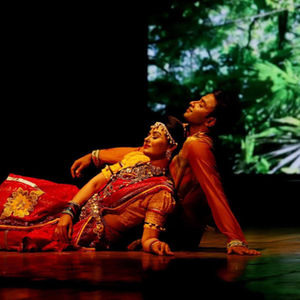
MOHUA
The culture of Bangladesh is a complex blend, dating back two thousand five hundred years, of several cultures and religions, including Hinduism, Jainism, Buddhism, and Islam. She finds her inspiration in the tormented geography of this country. Bangladesh is located in the flat and low delta formed by the confluence of the Ganges and the Brahmaputra. The largest part is less than twelve meters above sea level and about ten percent of the territory is located below sea level. The vast majority of precipitation falls during the five monsoon months, from June to October. It is one of the most densely populated countries in the world.
The ensemble strongly influences the popular culture of this country born from the partition of India in 1947. The country then became the eastern part of the dominion of Pakistan. In the troubled geography and institutional life, a secular culture that is the cement of society responds. The National Folk Ensemble "Mohua" aims to professionalize the expression of popular culture and make it known worldwide. The country did not have an institution of this type until the implementation of this ballet, the transmission of culture was highly endangered.
New state for an ancient nation, Bangladesh has a popular culture including both new and old elements. There is a rich tradition of folk songs, with lyrics speaking about spirituality, mysticism and devotion, and particularly love. It recognizes the traditions «bhatiali», «baul», «marfati», «murshidi» and «bhawaiya». The ensemble is punctuated by several musical instruments, including the bamboo flute (banshi), the drums (dole), a simple one-string instrument called 'ektara', a four-string instrument called 'dotara', and the mandira (small metal percussion instruments).
Popular culture is transmitted by mystical minstrels who live in rural areas. Their music and lifestyle have influenced much of the Bengali culture. They can live permanently near a village or go from village to village. They earn their living singing accompanied by a drum. They do not identify with any particular religion, ignore the system of castes and particular gods, temples or sacred places. They attach all their importance to the physical body of the individual as being the place where God resides. They are admired for this detachment from conventions as well as for their dance and poetry. They are the symbols of Bengali culture where poetry, music, songs and dances explore man’s relationship with God and spiritual liberation.
The National Folk Ensemble "Mohua" walks on this path. You will be seduced by the beauty of the costumes and the strength of the dances, and especially by the balance and power of the proposed show. As if Bangladesh finally needed its popular culture to exist otherwise than by unleashing the elements that make it topical.












